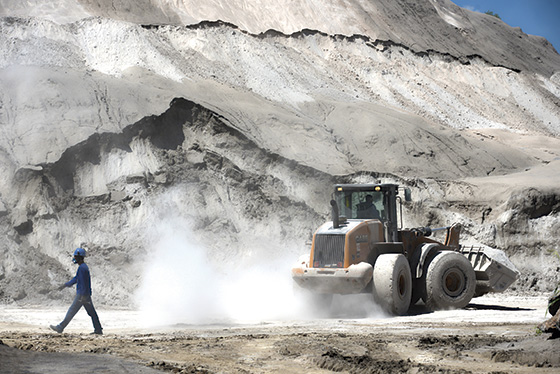The art of prevention

Constant monitoring and specialized equipment are some of the alternatives used to ensure tightness and safety in tailings dams
People spoke and wrote a lot about mining tailings dams, especially about measures to be carried out to prevent new accidents similar to that of theFundão Dam, in Mariana (MG), whose rupture caused the worst environmental disaster in the country.At the limit, let this all serve as a lesson. But our focus in this article is other.
Residues of mining processes are contained intailings damsto prevent deterioration of the areas located downstream.In other words, to prevent the impact in the areas located in a lower elevation in relation to the central point of mining activities. “Summing up, the purpose of a tailings damis to hold the residues, preventing their spreading through the region, especially in waterways and groundwater table”, explains the geologistFlavioMiguez de Mello, honorary president of theComitêBrasileiro de Barragens (CBDB – Brazilian Dam Committee) and director of the National Academy of Engineering (ANE).
The problem is that—as far as exploitation goes on—rejects are accumulating more and more. This demands periodic actions of monitoring and maintenance. “Generally dams become progressively higher, increasing their height and the elevation of the corresponding pond level. In some cases,dam height may go above a hundred meters”, complements the expert. “In addition, dams have to be decommissioned after their conclusion, to ensure downstream safety.”
Thus, it is fundamental that tailings dams would be carefully inspected from time to time to check their conditions of safety. Supporting these inspections—in addition to structural inspections—an analysis of instrumentation readings, mainly piezometric evolution—the measurement of pressure (or compressibility) of liquids present in the soil—is fundamental.“This is part of the currently effective standards, which resulted froman initiative of theComitêBrasileiro de Barragens”, comments the geologist.
INSPECTION
According to the geologistFábioMagalhães, fromVogbrRecursosHídricos e Geotecnia, the rupture of a dam is caused by the internal level of water. That is why he says that it is necessary to install equipment that may ensure local drainage, as well as piezometers, which are instruments to measure the existing water level inside the structure. “The safety inspection uses conventional methods of stability analysis from soil mechanics. Cracks in the dam, for example, are revealed by surface inspections”, saysMagalhães. “However, there are specific instruments such as piezometers, inclinometers and others, used to determine horizontal, surface and subsurface displacements, in addition to superficial milestones, used to show abnormal movements and pressures”, complements him.
According toLuiz Antonio Naresi Jr., technical and planning manager ofProgeoEngenharia, equipment used for treatment and consolidation of dam structures includes also rotary-percussive drills, rotary probes, injection equipment, double shutters and others.“When a dam has problems, it is necessary to carry out a mixed (percussion and rotary) survey to verify its cause”, says the expert in heavy foundation and geotechnics.
In some cases, when the dam has leaks in the core and/or shoulders, it is necessary to inject cement grout (called injection curtain) to prevent the flow of water throughits main embankment. This prevents that fines would be carried by the flow, causing erosion that could lead to a catastrophic rupture.
As described by engineerNaresi, equipment such as double horizontal mixers, roto-percussive drills and high pressure water pumps—to wash the holes and carry out the water loss—are used in these treatments. “The pump is attached to a double shutter to check the specific places where water loss could occur”, details him.

Av. Francisco Matarazzo, 404 Cj. 701/703 Água Branca - CEP 05001-000 São Paulo/SP
Telefone (11) 3662-4159
© Sobratema. A reprodução do conteúdo total ou parcial é autorizada, desde que citada a fonte. Política de privacidade














